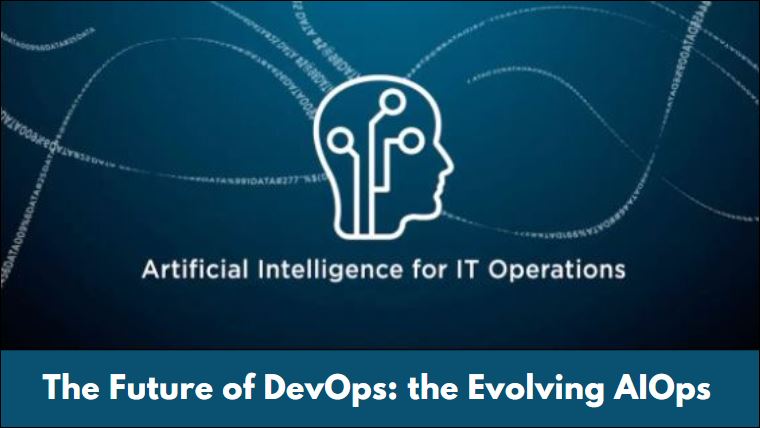The current Ops management is already beyond the scope of manual managing and sooner or later will become worse in the years to come because of the increasing complexity of applications. It is time to introduce a friend which DevOps & CD tool ecosystem has required for a good long time – AIOps!
The paradigm swing occurred quite fast. Active organizations have supported the cloud to break into silos between development and operations and incorporated agile expansion for faster cycle times to generate strategic benefits. They have joined engineer teams across life-cycle appliances from development and testing to deployment and functioning and formed new roles with varied skills. They then pushed ahead along with DevOps and CI/CD for automation of pipelines for speedier delivery. Here appears the future of DevOps – AIOps!
Future requires AIOps
DevOps has been assigned to asserting a toolchain for the programmed delivery of up-to-date coding, and on-demand scaling. In their free time, they operate on enhancing performance and monitoring the costs. For a bigger application, thousands of virtual machines or containers are available, each with a pile of software, along with cloud services such as load balancers and auto scalers that require to be aligned and retained which are in a steady flow. As these challenges are managed well, AIOps is developing as a great solution.
The term AIOps or artificial intelligence for IT operations was coined by Gartner, who outlined it as “AIOps platforms enrich IT operations through greater insights by combining big data, machine learning (ML), and visualization. IT leaders should initiate AIOps deployment to upgrade performance analysis today and augment IT service management and automation over the next two to five years.”

Coming to current DevOps, the DevOps teams incline to act on the same things every time yet seek the same fixes too. Human developers create and implement decisions generally based on their expertise and experiences. But at times they ignore an idea or any solution as it might be risky to apply. The DevOps team can maintain as much stuff that is taking place in the CI/CD toolchain. This might be one of the reasons why the future of DevOps – continuous optimization isn’t a choice with humans.
The True AIOps
AIOps systems make learning from your data and adjust to how your app operates that suggests they won’t perform every time an equivalent thing. AIOps systems can deplete all the probable solutions towards any problem, also implementing ideas that developers think are too risky. AIOps systems create and execute decisions sans human involvement. The AIOps systems operate continuously and even have turned out to be a typical element of your delivery. The shift towards AIOps is at its early stages but things are heating up as they are approaching new solutions and success stories in the market. The IT professionals are aware that the extended version of DevOps is AIOps.
We had seen some automated root cause assessment and failure prediction when beginning with log analysis systems a few years back. Now the incursion detection systems are learning from the deviant traffic, also across a few companies. In recent times, auto-scaling systems have made their debut. The AIOps is rolling in with its solutions which they are deploying into testing or production, applying the customer’s latest DevOps monitoring and toolchain.
The traditional IT department has been replaced by DevOps. Titles and roles also have changed but the challenges which IT departments were to address, have only been multiplied by the scale ingrained in microservice architectures. Therefore, for making the DevOps future look great, you require systems to be designed for overcoming these challenges. In the coming years, AIOps must advance beyond the vision of Gartner to facilitate DevOps to adopt the scaling and speed of progressive developments.
Also recommended: Best Practices to secure your DevOps Pipeline
Synopsis
Well, AIOps blends ML and big data to modify the functional processes, covering non-uniformity perception and correlational resolution. AIOps can also assist in driving faster the root-cause analysis [RCA] and speed up the meantime to repair [MTTR]. Hence, AIOps is here to stay for the long run as its evolving will show great results in near future! Let us know your thoughts on AIOps – the future of DevOps!
Sanghamitra Roychoudhary
Latest posts by Sanghamitra Roychoudhary (see all)
- DevSecOps: Integrating Security into your CI/CD Pipelines - May 24, 2024
- 8 Top Challenges of Cyber Security in the Digital Age - April 27, 2024
- 7 Best Practices for an Effective DevSecOps Implementation - April 26, 2024

